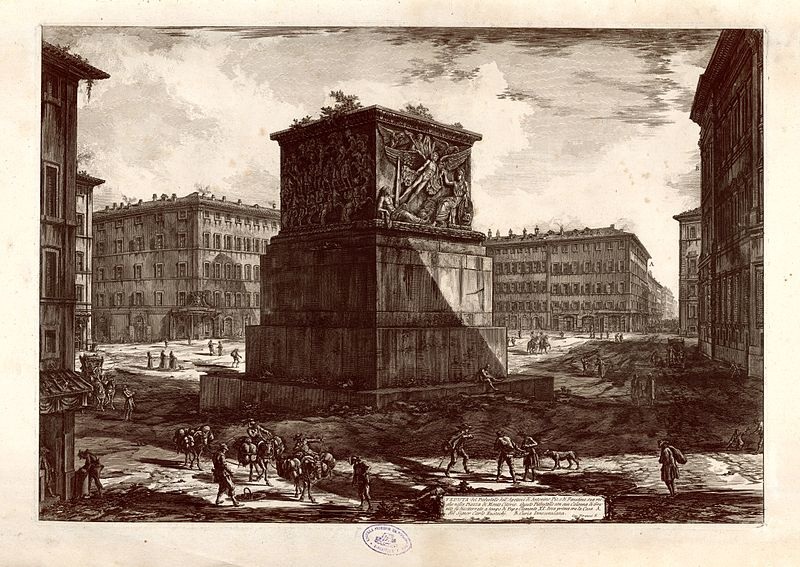|
Within the history of Imperial Rome, the time period dating from 96 C.E. to 180 C.E. is known as the age of the “Five Good Emperors” in honor of those that presided over the empire in that time: Nerva, Trajan, Hadrian, Antoninus Pius and Marcus Aurelius. It was a time of distinction where trade flourished and the previous held prejudices between Italian born Romans and Romans originating from the outer provinces of the empire lessened as provincials took more positions of power. People were no longer constricted to positions based on lineage but on ability and experience, even the emperors themselves. In 138 C.E. Antoninus Pius, a tried and true politician, was adopted by Emperor Hadrian at the age of 51. Furthermore Antoninus went out and adopted Marcus Aurelius and Lucius Veras assuring a clean succession. During his reign, Antonius Prius restored the Senate without weakening his own imperial power and generally ruled with merit. Upon his death in 161 C.E his two successors rose to power as the first co-emperors, and one of their first acts was to memorialize their adopted father with the Column of Antoninus Pius. Marcus Aurelius and Lucius Veras decided to erect the Column of Antoninus Pius in the Campus Martius (the Field of Mars) a former flood plane by the Tibus River. A publicly owned section of land, Campus Martius developed as the Emperors of Rome tried to out do one another by raising monuments, large entertainment complexes, libraries and temples -such as the Parthenon- in order to leave their own mark on the Roman landscape. Originally a monolith, the Column of Antoninus Pius consisted of a large red granite column (standing 14.75 meters high with a 1.9 diameter and topped with a Statue of Antoninus Prius) set into a white marble base carved with commemorative reliefs measuring 2.6 meters high. Unfortunately the upper section of the column did not stand the tests of time and only the pedestal remains intact- largely due to the fact that prior to its discovery in the 18th century it had been buried with only a fragment of the original column marking its placement above ground. The base of the Column of Antoninus Pius takes the shape of a cube and features a dedication on one side, with three relief sculptures on the others . Dubbed the Apotheosis, the first carving shows the moment Emperor Antoninus Pius ascended to heaven with his wife Faustina, surrounded by mythical personifications of Rome. It is of note that Antoninus and Faustina are portrayed together as their deaths were separated by more than 20 years. The presence of Faustina implies that Antoninus Pius remained faithful to his wife even after her death and was thus reunited with her in the afterlife. The former emperor and his wife take center stage upon the back of an unknown winged deity. To their right reclines an physical incarnation of Campus Marius holding an imported Egyptian obelisk that served as a prominent landmark (and sundial) for the area as well as a symbol for the imperial unification. To their left sits a personification of the Roman Empire, Roma, with her arm resting on a shield which depicts the mythical founders of Rome, Romulus and Remus, as they suckle a she-wolf. Stylistically the Apotheosis is still firmly rooted in the classical tenants set forth by the Greeks, the forms are elegant, proportioned and aligned to a single ground line at the bottom of the panel. The subject matter speaks to the propaganda and glory of the Roman Empire in addition to the memorialization of two specific individuals - though it cannot be said to be a true likeness as the figures appear to be idealized, not naturalistic. The last two sides are nearly identical and often cited in regards to the event they portray, the Descursio. In these reliefs a group of cavalry (men upon horses) surround a group of standing soldiers, recreating the ancient Roman ritual of circling an Imperial pyre. The figures of the cavalry are stocky in addition to being disproportionately large to the steeds they ride and none of the figures in the relief conform to a single ground line. The artist sought to simultaneously portray both the circular movement of the horses and the ground view of the figures, giving each one a bit of land to stand upon with no unifying representation of space. Unlike the Apotheosis, the Descursio reliefs show a break with classical Greek canon, a first for the Romans. In fact the composition shows more similarities in composition to the artworks produced by freed slaves (foreigners) than to the regimented representation of space which the Greeks held to. While it is often criticized for its lack of finesse, the Descursio illustrates a shift in the Roman psyche away from the its centralized sense of self and the opening to new ideas and techniques other than those perfected by the Greeks. It also gives a glimpse of art styles to come - from the stockier figures (and the loss of the Greek 8-head proportional canon) to the flattening of space which would dominate Byzantine, Medieval and Middle Eastern art to come. Bibliography
Images from Wikimedia Commons
0 Comments
Leave a Reply. |
AuthorCrystal has a MA in the History of Art from Courtauld Institute of Art as well as a BFA in Art History from the Academy of Art University. Archives
November 2017
Categories
All
|



 RSS Feed
RSS Feed